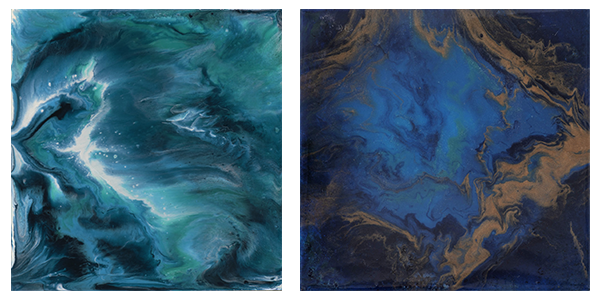
You can support Terra Relicta by donating! Please, do so, and thank you!

Ottawa (Canada) based Raphael Weinroth-Browne is a young musician engaged in many musical acts, plus contributing with his cello to some more. Sunken into music waters as a child, Raphael Weinroth-Browne is now an established cellist and composer. His latest release was last summer with Musk Ox, a well-acclaimed album Inheritance (read the review HERE). Another well-acclaimed album, Worlds Within, released in January 2020, is his solo project debut full-length, also released in a live version some months ago. His music speaks for itself, being neo-classical, folk, ambient, post-rock and/or metal. And even though Raphael solely uses a classical instrument - the cello, he is managed to somehow extract from it more than assumed to fit the "nature" of a cello. Many things regarding Raphael, his cello, his music get revealed in this interview. Welcome to join us.
Interview with: Raphael Weinroth-Browne
Conducted and edited by: Jerneja
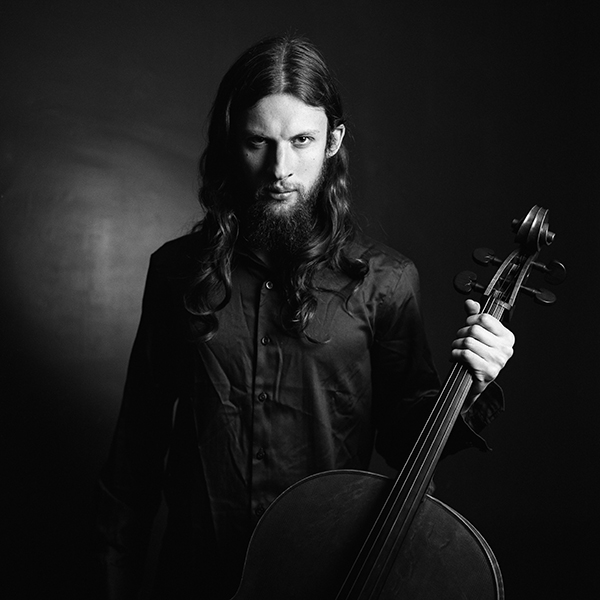 Jerneja: Hello Raphael, since we are to start this interview with your debut album, I have to mention, that this interview is also a debut interview with a neo-classical musician for Terra Relicta dark music web magazine. No pressure, though... So, you released your ten-tracks debut album Worlds Within on 24 January 2020. What do you have to say about it after almost two years?
Jerneja: Hello Raphael, since we are to start this interview with your debut album, I have to mention, that this interview is also a debut interview with a neo-classical musician for Terra Relicta dark music web magazine. No pressure, though... So, you released your ten-tracks debut album Worlds Within on 24 January 2020. What do you have to say about it after almost two years?
Raphael: I'm truly grateful for the positive response to Worlds Within since it came out. When I was working on the album, I viewed it as a kind of experiment and was unsure whether it would actually end up being good music. The style of composition on this record was a departure from my past releases with my groups Kamancello, The Visit, and Musk Ox, so I had some doubts about how it would be received. However, I feel fortunate that audiences and critics alike have really enjoyed it; I've received many messages and comments from different people with whom this record resonated deeply, which means a great deal to me. Once the album was complete, I was quite satisfied with the music, but it took me some time to get to know it fully, and I feel that since its release, I've come to understand the nature of this music much better. Learning to perform the material live has allowed me to explore the sound world of this album more intensively, and it has since become one of my favourite pieces to play. That was part of the reason why I chose to make a live version of the album in 2021 - so that I could document my perspective on the Worlds Within material one year later.
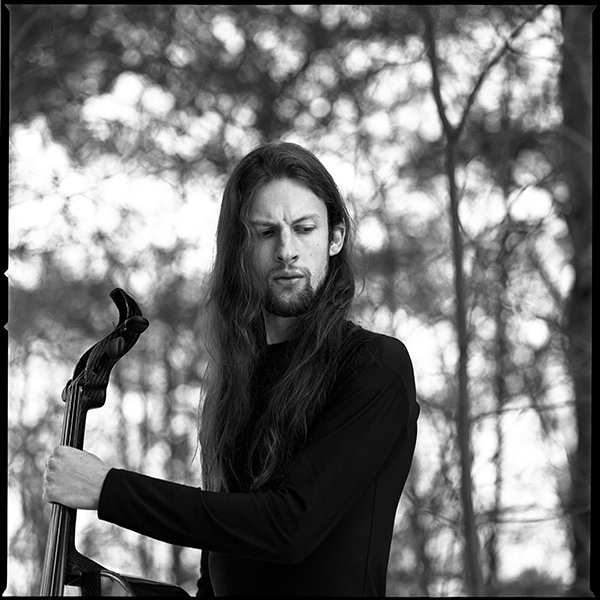 Jerneja: You also released the album's live version last summer. Besides being "live" and songs compounded, are there any other differences between them, and which one (if any) received better feedback from critics and fans? If so, what do you think why?
Jerneja: You also released the album's live version last summer. Besides being "live" and songs compounded, are there any other differences between them, and which one (if any) received better feedback from critics and fans? If so, what do you think why?
Raphael: I chose to revisit Worlds Within as a live album to explore the universe of this music more deeply and with a different perspective rather than to one-up or surpass the original studio version. It was an opportunity to extend the lifespan of the Worlds Within album cycle during a period of no touring and to offer fans a companion record and a closer look at my process as a creator and performer of music. The initial intent was simply to make high-quality videos of the full album, akin to a pre-recorded live stream or live DVD. Most of my audience is outside of Canada, and sharing these performances has helped me to stay connected with some of my most supportive fans, who may not have the opportunity to hear this solo material at a live in-person show any time soon. In 2020, I had the opportunity to reflect on what Worlds Within has meant to me, and through the live album, I've been able to communicate my ideas in greater depth, both by way of my performance and by sharing my thoughts around the concepts and thematic ideas surrounding the compositions. I was also able to expand on the visual aspect of the album with new cover artwork, CD layout/designs, and photos that all relate to the imagery of Worlds Within. Since Worlds Within was created largely in the studio without the intention of being performed in real-time for an audience, I had to make some minor modifications for it to translate live. I chose to perform the album in four separate parts in a concert setting (the original record is a single 40-minute piece divided into ten tracks, intended to delineate the structure and division between movements). I've omitted certain sections of the studio album and extended others with improvised solos that highlight the expressive side of my playing and cater more to the live energy and emotional intensity of this format. The live album has the advantage of being recorded in a better acoustic space with a superior-close mic on the cello. That said, this method of recording all the layers in real-time using a loop pedal was far more limiting from a mixing standpoint than the studio album where every layer was recorded individually, allowing much greater freedom and flexibility in post-production. I've always loved reworked versions of songs and even full remix albums in the way they reinvent the original work, stripping it down to its core and building it back up from scratch. I think Worlds Within Live certainly offers this. I'm not too concerned with which version fans or critics prefer; that was not the reason I made this live record, and I believe that pitting the two against each other is like comparing apples and oranges. Worlds Within Live was a direct response to the times we are living in; artists need to release music more often now to stay relevant, and the coronavirus pandemic has limited our ability to commune with music in a live setting. Making this live record felt like a project that was manageable, not overly ambitious or costly, and suitable for addressing these issues. It has certainly served its purpose in bolstering sales and streams and generating greater interest in my solo work, and for that, I'm grateful.
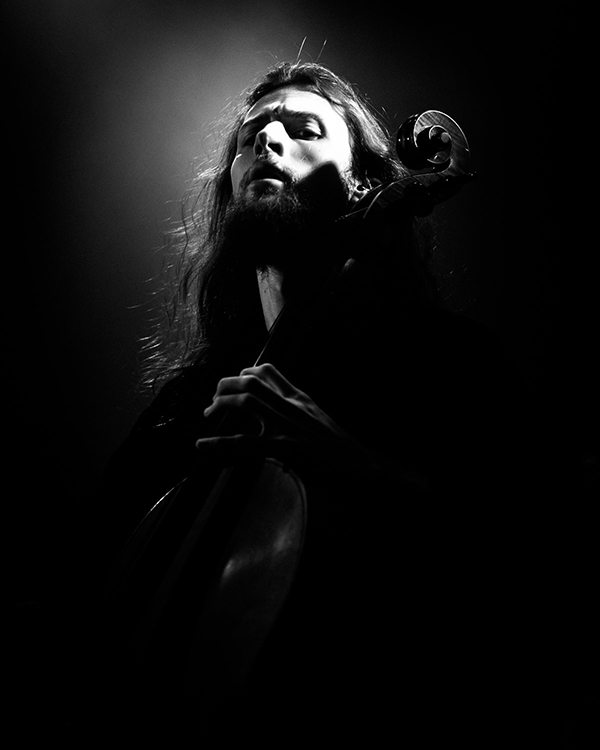
Raphael: Yes, the percussion parts were also created on cello using my Schatten bridge pickup. I've developed a technique where I tap on the pickup to produce a kick drum sound and flick the bridge to imitate a snare or cross-stick effect. On the track "Tumult I", I'm playing a rhythm on the bridge pickup and running the signal through a delay pedal to create additional beats or "ghost notes" in the pattern. Worlds Within is the first album where I've employed this technique, but it's becoming a common feature of my solo compositions.
Jerneja: Do you still rest on your laurels, or have you already started working on a sophomore album?
Raphael: Those who know me well know that I never take a break! I'm always working on something. I actually have many fully written solo pieces (some of which I've already performed live) that I plan on recording and releasing in the future. I've been extremely busy with both Worlds Within Live and the new Musk Ox album Inheritance, as well as with constant session work on a wide range of albums, some of which are quite demanding projects. Over the course of the autumn, I have been working on the second full-length album from my duo The Visit and will be resuming work on a new solo release that I began recording last fall.
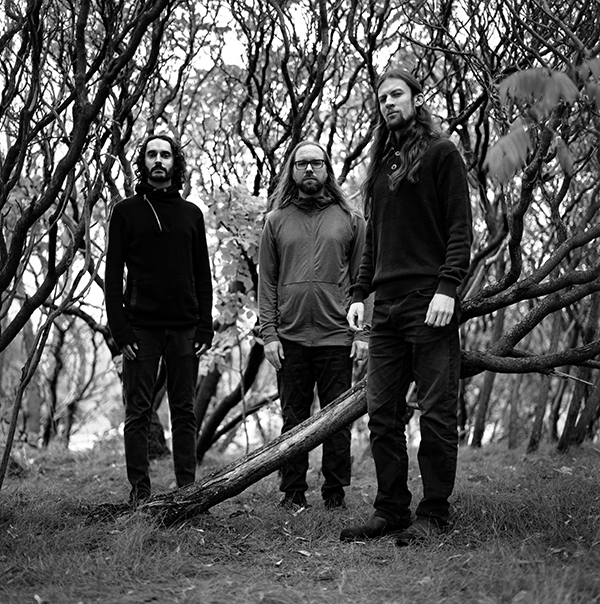 Jerneja: And there is The Visit project, established by you and Heather Sita Black - set as a musical dialogue that transcends genres and idioms, featuring your cello and Heather's voice. I find your cello sounding (neo)classical, though in a heavier atmosphere, while Heather's singing reminds me of Lisa Gerrard and Björk. I only now encountered The Visit, and it was "love at first sound". So please, tell us more about The Visit?
Jerneja: And there is The Visit project, established by you and Heather Sita Black - set as a musical dialogue that transcends genres and idioms, featuring your cello and Heather's voice. I find your cello sounding (neo)classical, though in a heavier atmosphere, while Heather's singing reminds me of Lisa Gerrard and Björk. I only now encountered The Visit, and it was "love at first sound". So please, tell us more about The Visit?
Raphael: Thank you, I'm really glad to hear you enjoyed The Visit! The music from this project is particularly close to my heart, so it means a lot! Heather and I met in early 2013 at an intimate house concert where I was playing a solo set. She had reached out to me shortly before - about collaborating on performance the following month. At the break, we began improvising together, and there was immediate and undeniable chemistry between us. We began meeting weekly to improvise and explore various musical landscapes. Through this process, we developed a creative vocabulary which became the foundation for The Visit's sound. At a certain point, the once-improvised ideas crystallized into set structures, and we began to compose long pieces out of the musical worlds we were exploring. In January 2014, we released our debut single, "Between Worlds", a 15-minute track that spanned a vast dynamic and musical range, from neoclassical minimalism to a climax reminiscent of extreme metal. This piece paved the way for our style and encapsulated our diverse influences. "Between Worlds" was my favourite thing to play when we began performing it - this music felt very exciting, even cutting-edge in a way. During mid-late 2013, we composed five other pieces, all of which would later appear on our debut LP, Through Darkness Into Light. These pieces arose from the musical connection between the two of us and the intense energy resulting from this bond. Most of the pieces on the album were written very quickly in the span of two or three days. All of The Visit's music to date features very non-standard, open cello tunings. I would improvise in these tunings and try to create a specific, immersive tonal and sonic world, and then populate it with different riffs, patterns, and variations. Gradually, a structure would emerge. Once this form had been established, Heather and I would improvise around it, and she would compose vocal melodies. Initially, all of our pieces were wordless, like our first "Between Worlds". At a certain point, Heather began adding lyrics. The first lyrics she penned were for the verse in "Offering", which begins over eight minutes into the track - quite unusual but very striking when it happens! This was the beginning of a conceptual thread that would tie all of the five pieces on the album together thematically. In early 2014, shortly after the release of "Between Worlds", we shot a live performance video of the track "Offering". Upon its release in the summer of the same year, it was very successful and opened many new doors for us as a band since it clearly encapsulated the intensity and almost ritualistic quality of our live performances. Through Darkness Into Light was recorded and released in 2015. Over the years, Heather and I have travelled to Europe on several occasions to perform in countries such as France, Belgium, the Netherlands, Germany, and the Czech Republic. Some notable shows we've played include festival appearances at the Cello Biennale Amsterdam, Wave Gotik Treffen, and the 21C Festival here in Canada. While we have been less active as a band in recent years, we are currently working on our second full-length album, which we hope to release next year. As the only instrumentalist in The Visit, I've always tried to cover a great deal of musical territory and convey the effect of guitars and drums or a self-accompanying texture so that my cello playing feels more like a band than a single instrument. Being in a duo with a singer gave me the opportunity to explore the possibilities of my instrument in exciting and challenging ways. I think that the style I've chosen to use for the band was also a catalyst for Heather to explore the incredible intensity and power of her voice. More recently, I've begun to combine the looping and layering techniques I've previously implemented in my solo work with our existing style - our next record will see a convergence of the compositional approaches taken on Through Darkness Into Light and Worlds Within.
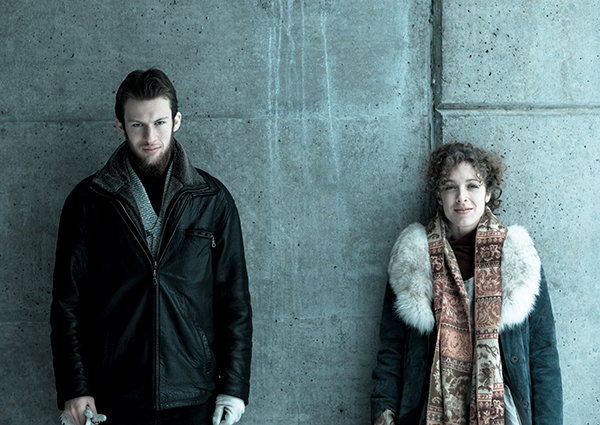 Jerneja: Was cello your first choice to play - I believe there are small cellos just for children?
Jerneja: Was cello your first choice to play - I believe there are small cellos just for children?
Raphael: Cello was the first instrument for which I took lessons. I had dabbled in other instruments before, but when I had the opportunity to take formal lessons, I chose the cello. The standard "adult" size instrument is referred to as 4/4. I started on a 3/4 size, and for very small children, there are even 1/8 size cellos.
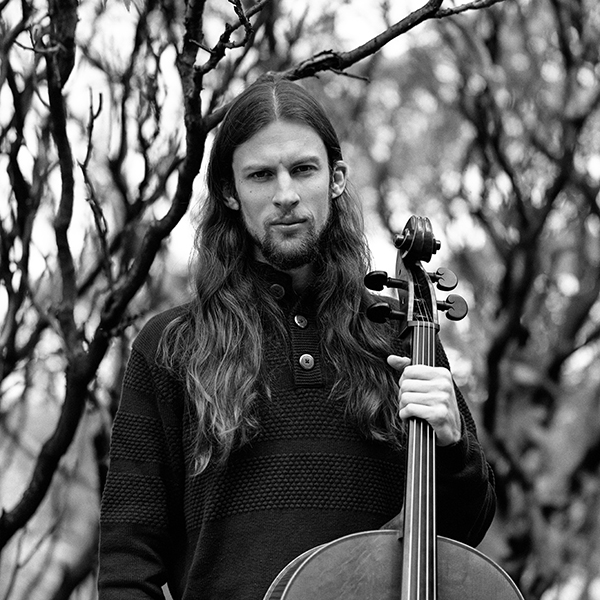
Raphael: Actually, I'm pretty terrible at the violin. I've never taken the time to try to learn it. It's very uncommon for cellists to play the violin equally well and vice versa as the technique isn't easily transferred from one instrument to the other. On the other hand, many violinists transitioned very smoothly to playing the viola. Although I did write most of the violin parts on Inheritance and Woodfall, I've typically written the string parts on a piano in order to hear them at once. I may not be physically able to play the violin adequately, but I do understand the instrument very well and have a lot of experience writing for it.
Jerneja: If you were only to expose one "speciality" of cello, what would it be and why?
Raphael: Probably its ability to evoke lamentation and to powerfully convey all the different shades of sadness in a way that speaks directly to the soul.
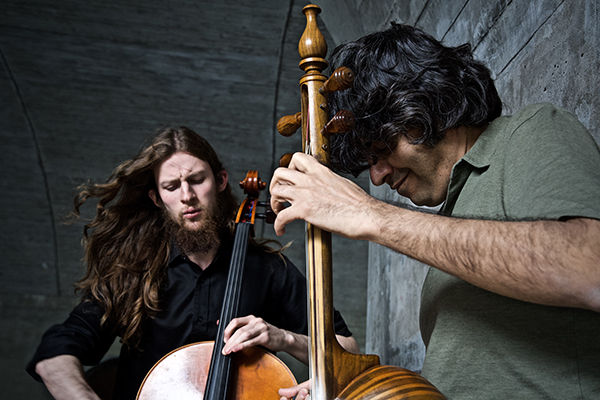 Jerneja: Good quality cello can cost a fortune but is there really a big difference in sound, or it is just the "prestige" talking?
Jerneja: Good quality cello can cost a fortune but is there really a big difference in sound, or it is just the "prestige" talking?
Raphael: Great question. I would say it's a bit of both. A cheap instrument will sound cheap no matter what, and more expensive instruments are definitely a world apart in terms of tone and colour, offering far more possibilities for shaping, expression, and projection. However, the mastery of the player and the unique sound their hands produce can sometimes make a mediocre instrument sound beautiful or even blur the lines between two cellos of greatly varying prices.
Jerneja: Is there any song of your versatile musical projects opus particularly special to you and why?
Raphael: That's a tough one! I would most likely choose "Ricercare". I feel like it's my signature piece on cello and a very direct reflection of my personality and style, containing influences from both Middle Eastern music and metal. It tends to have a very direct impact in a live setting and has a raw, fiery energy that leaves a strong impression on the listener.
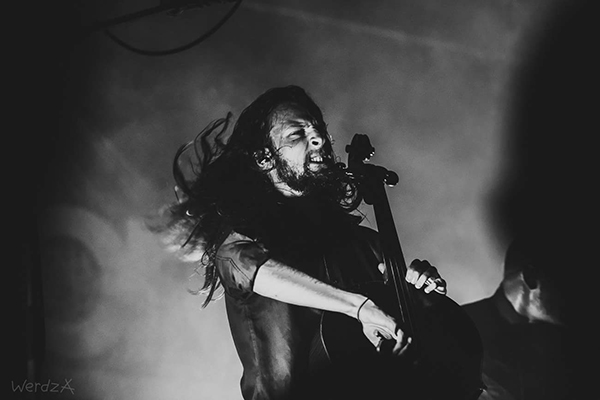
Raphael: At the moment, I'm trying to build momentum with my projects in order to start touring. I'm currently more focused on building a catalogue since that will help to increase awareness around the music I'm making as a solo artist and with my different groups. Expect more releases in the future, and hopefully more shows following that…
Jerneja: Is there anything you would like to add and/or communicate at the end of this interview?
Raphael: Thank you, Jerneja, for your great questions and thanks to everyone who has read this far - I really appreciate you taking the time to get to know my work and learn more about my story. If you like the music, I encourage you to buy an album or share links with a friend - it helps immensely! Hope to connect with you online or at a show in the near future. Take care and be well!
Jerneja: Thank you too, Raphael. I wish you all the best and good luck with your music career, although, with such a great talent, you don't really need it.
